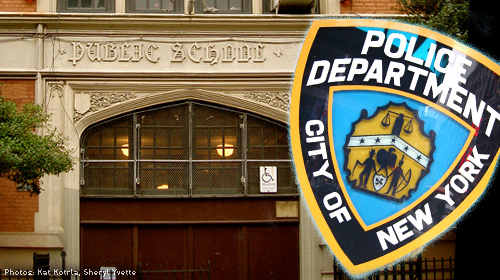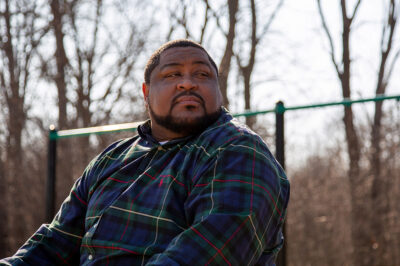
Five dollars is apparently all it takes to land a 7-year-old in handcuffs in a New York City public school these days.
Parents across New York City awoke Wednesday morning to the news that Bronx third-grader Wilson Reyes was pulled out of class, handcuffed and interrogated over the course of 10 hours at his elementary school, and later, at a local precinct. Reyes was charged with robbery after someone said he grabbed $5 that a classmate had dropped on the floor, causing a scuffle among several boys.
Playground disputes that once amounted to a trip to the principal’s office have long since come under police jurisdiction in New York City, where over 5,000 agents assigned to the School Safety Division roam public school campuses under the auspices of the NYPD.
When Reyes’ mom was finally allowed to see her son, the New York Post reports, she found him handcuffed to a wall at the NYPD’s 44th Precinct, where she says he’d been interrogated and verbally abused for six hours. The shocking photo she took of her son in cuffs made front-page news on Wednesday.
Another student eventually admitted to taking the money, but it was well after Reyes had spent 10 hours handcuffed, interrogated and humiliated by the police. A police source told the NY Post that officers were responding to “a 9-1-1 call of a robbery and assault.”
Though shocking, Reyes’ story is far from unique. When police officers are involved in disciplining minors, a classroom disruption involving an “unruly” student can quickly escalate into a call for police back-up.
Nearly 900 arrests were made at New York City public schools during the 2011-2012 school year, and 90 percent involved black or Latino students, according to an analysis of NYPD data released last year. Another 1,666 summonses were issued for illegal conduct.
New York’s public school students are dragged out of classrooms and cafeterias by police officers for shouting in the hallways or scribbling on desks. Court summonses and assault charges are levied for playground fistfights, and students are carted from schools to precincts for the fear-inducing offense of carrying a cell phone on school grounds. In a number of cases, officers have also used excessive force to arrest children for violating school rules, at times leaving injuries requiring hospitalization.
That’s why the ACLU – along with the New York Civil Liberties Union, and law firm Dorsey & Whitney – is suing the City of New York on behalf of the city’s public middle and high school students, accusing the NYPD’s School Safety Division of violating students’ constitutional rights.
Yet the over-policing of our schools is not an issue unique to New York City.
The deployment of cops to public schools across the country epitomizes the national trend known as the “school-to-prison pipeline,” in which children of color are funneled from our public school classrooms into the juvenile and criminal justice systems.
There’s Kaleb Winston, the Salt Lake City 14-year-old who was interrogated by gang police at his school because of the design of his backpack and the sketches he made for art class. Or the Kansas sophomore whose arm was broken as a cop pulled a Taser gun to help arrest him for wearing saggy pants. One Wisconsin teen was arrested and fingerprinted for allegedly stealing a chicken nugget meal in the school cafeteria, while a Texas honor student was jailed for missing class. And then there’s the Georgia kindergartener who was handcuffed last year when she refused to calm down.
The stories are countless, and every one of them heartbreaking. In too many school districts across the country we are witnessing the increased criminalization of our youngest and most vulnerable students. Parents, teachers, principals, and mental health experts know children best. We should let them decide what’s best for their wellbeing. Putting cops in classrooms is not the answer to ensuring our children’s safety.
Learn more about racial discrimination and other civil liberties: Sign up for breaking news alerts, follow us on Twitter, and like us on Facebook.




